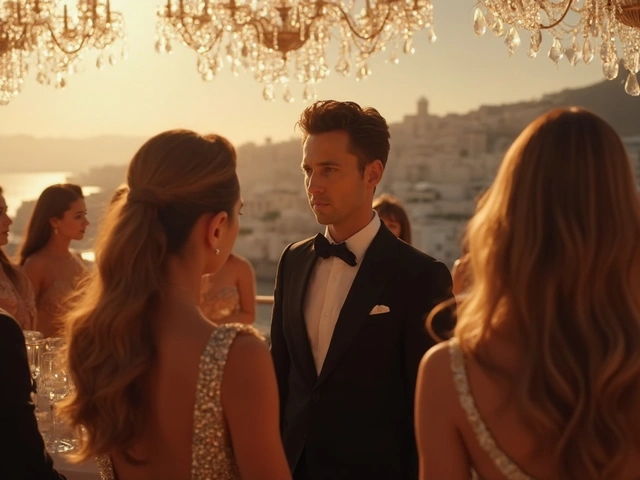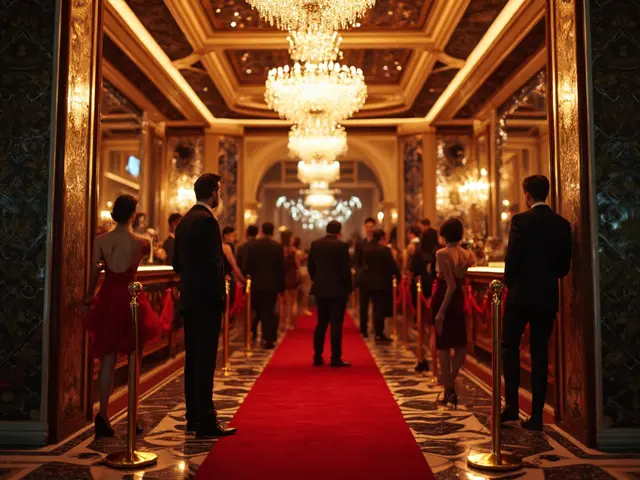Imagine sitting at a table overlooking the Mediterranean, the sun just dipping below the horizon, a glass of chilled Chablis in hand, and the scent of truffle risotto drifting from your plate. This isn’t a dream-it’s a Tuesday night at the Hotel Restaurant Monte Carlo. But here’s the truth: most guests leave remembering the view, not the food. And that’s a mistake. The real magic isn’t in the glittering skyline or the marble floors. It’s in the details that turn a meal into a memory.
It Starts With the Chef’s Story
The chef at Hotel Restaurant Monte Carlo didn’t train in Paris or Milan. He grew up in a small village near Nice, where his grandmother cooked with ingredients from the market that changed daily. That’s why the menu here doesn’t feel curated-it feels alive. You won’t find the same dish twice in a month. One week, it’s wild sea bass with fennel pollen and blood orange. The next, it’s venison tartare with black garlic and candied pine nuts. The chef doesn’t follow trends. He follows seasons, and he listens to the fishermen who bring in their catch before dawn.
When you ask about the scallops on your plate, the server doesn’t recite a script. They say, "Jean-Luc caught these off Cap d’Ail yesterday. He says they’re sweeter this time of year because of the current." That’s the kind of detail that sticks. It’s not about bragging rights. It’s about connection.
The Table That Feels Like Home
Most luxury restaurants treat you like a VIP. This one treats you like family who just showed up for dinner. The host doesn’t rush you to your table. They ask if you’d prefer the window seat or the quieter corner near the fireplace. They remember your name-not because they checked your reservation, but because they noticed you paused at the wine list last time and asked about the Domaine Tempier.
There’s no velvet rope here. No stiff service. The staff moves like they’ve known you for years. A sommelier brings you a taste of a 2018 Château Margaux before you order, not because it’s expensive, but because they know you like wines with structure, not fruit bombs. And when you finish your dessert-a dark chocolate soufflé with sea salt and lavender honey-they don’t just clear the plate. They bring a small ceramic dish with two macarons and say, "For later. We made them this morning. The lavender is from the hills above Eze."
The Unwritten Rules
There are no dress codes posted. But everyone knows them. No shorts. No sneakers. No loud laughter after 9 p.m. But that’s not because of rules. It’s because the atmosphere is sacred. You don’t come here to be seen. You come here to feel something.
Don’t rush. Dinner lasts at least three hours. That’s not a suggestion-it’s the rhythm. The courses arrive with space between them. Not because they’re slow, but because they want you to breathe. To talk. To notice how the light changes as the sky turns from gold to deep blue.
And if you’re celebrating something-a birthday, an engagement, a quiet victory-you don’t need to tell anyone. They’ll know. Maybe you ordered the same wine you had on your first date. Maybe you lingered after dessert, staring at the stars. They’ll bring a bottle of champagne on the house. No announcement. No cake. Just a single candle on the table, and a note: "To quiet moments that last a lifetime."

What Makes It Different From Other Luxury Restaurants
Monte Carlo has dozens of high-end restaurants. Some have Michelin stars. Some have celebrity chefs. But few have this: consistency without repetition.
At Le Louis XV, you get perfection. At Joel Robuchon, you get spectacle. At Hotel Restaurant Monte Carlo, you get authenticity wrapped in elegance. The ingredients are local-olive oil from Provence, cheese from the Alps, fish from the Ligurian Sea. The staff doesn’t speak five languages to impress you. They speak French, Italian, and English because that’s what the regulars speak.
And here’s the kicker: they don’t advertise. You won’t find them on Instagram influencers’ feeds. You won’t see billboards. You hear about it from someone who went last year and said, "You have to go. Not because it’s fancy. Because it feels real."
How to Plan Your Visit
Reservations open exactly 60 days in advance. Not 90. Not 30. 60. And they fill up fast-not because they’re exclusive, but because the table count is small. Only 28 seats. That’s intentional. It keeps the energy intimate.
Book for a Tuesday or Wednesday. Weekends are beautiful, but they’re busy with tourists who don’t know the rhythm. Midweek, the kitchen is calm. The chef has time to talk. The staff remembers your name.
Ask for the terrace if you want the view. Ask for the corner table by the bookshelf if you want quiet. Don’t ask for the "best table." There isn’t one. There’s just the one that fits your mood.
Wear something comfortable but polished. A linen shirt. A simple dress. No jewelry that clinks. You want to be present, not perform.
And here’s the most important tip: don’t order the tasting menu unless you’re ready to stay late. It’s seven courses. Add wine pairings, and you’re looking at four hours. That’s not a problem if you’ve got nowhere else to be.

What to Order (And What to Skip)
Start with the octopus carpaccio. Thinly sliced, marinated in smoked paprika oil, with a sprinkle of sumac. It’s not on the menu every night, but it’s always there when the chef feels like it.
For the main, the wild turbot with brown butter and capers is legendary. But if you’re feeling adventurous, try the duck leg confit with quince and black truffle. It’s richer, slower, deeper. You’ll taste the difference in the sauce-it’s reduced for 14 hours.
Skip the foie gras. It’s good, but it’s not special here. Everyone orders it. The chef doesn’t need you to order it to prove he’s luxurious.
For dessert, go for the almond cake. Not the chocolate. Not the tiramisu. The almond cake. It’s baked in a copper mold, served warm, with a dollop of crème fraîche and a single drop of orange blossom water. It’s the kind of thing you’ll dream about for weeks.
And yes, order the digestif. They have a private cellar with bottles from the 1950s. Ask for the Marc de Châteauneuf-du-Pape. It’s not cheap, but it’s the last thing you’ll taste before you walk out into the night-and it’ll stay with you longer than the view.
Why It’s Not Just a Meal-It’s a Ritual
This isn’t about eating. It’s about slowing down. In a world where every experience is designed to be shared, this place asks you to keep it quiet. To savor. To be still.
You’ll leave with no photos on your phone. No Instagram story. But you’ll carry something heavier: the memory of a moment that didn’t need to be recorded to be real.
That’s why people come back. Not for the lobster. Not for the view. But because, for a few hours, they remember what it feels like to be truly present.
Is Hotel Restaurant Monte Carlo worth the price?
Yes-if you value experience over expense. A dinner here costs between €350 and €600 per person, depending on wine pairings. That’s more than most fine dining spots. But you’re not paying for a meal. You’re paying for time, attention, and craftsmanship that doesn’t exist anywhere else in Monaco. The ingredients are sourced daily. The staff remembers your name. The chef crafts dishes based on mood, not menus. That kind of service can’t be replicated. It’s rare. And it’s worth every euro.
Do I need to dress formally?
No formal dress code is posted, but the unwritten rule is elegant casual. Men should wear collared shirts and closed-toe shoes. No ties or jackets required. Women can wear a dress, tailored pants, or a nice top with a skirt. Avoid sneakers, shorts, tank tops, or flip-flops. You’re not going to a gala-you’re going to a quiet, refined space where style is subtle, not loud.
Can I visit without staying at the hotel?
Absolutely. The restaurant is open to the public. You don’t need a hotel reservation to dine. But because it’s small and popular, booking in advance is essential. Walk-ins are rarely possible, even for lunch. The hotel guests get priority for reservations, but the restaurant reserves about 40% of its seats for outside diners.
Is the restaurant good for special occasions?
It’s one of the best places in Monaco for special moments. Birthdays, anniversaries, proposals-they all happen here. But don’t tell them ahead of time. The staff notices when you’re celebrating. A quiet gesture-a candle, a glass of champagne, a handwritten note-will appear without fanfare. They don’t do speeches or singing. They do silence, and that’s more powerful.
What’s the best time of year to visit?
Late spring (May to June) and early fall (September to October) are ideal. The weather is warm but not scorching. The crowds from the Grand Prix have left. The kitchen is at its peak-fresh seafood, ripe vegetables, and herbs from the garden. Winter is quiet, but some dishes are limited. Summer is beautiful, but the restaurant fills with tourists who don’t understand the rhythm. Go when the air is cool and the sea is calm.




